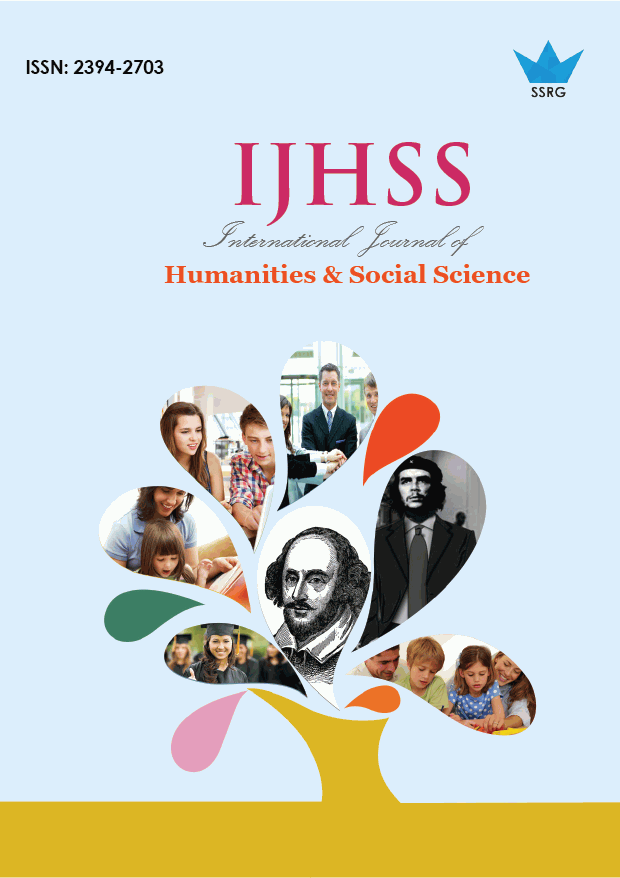Improving Accessibility in Public Spaces for Individuals with Hearing Loss (A Field-Based Study)

| International Journal of Humanities and Social Science |
| © 2024 by SSRG - IJHSS Journal |
| Volume 11 Issue 5 |
| Year of Publication : 2024 |
| Authors : Abhinav Raj |
How to Cite?
Abhinav Raj, "Improving Accessibility in Public Spaces for Individuals with Hearing Loss (A Field-Based Study)," SSRG International Journal of Humanities and Social Science, vol. 11, no. 5, pp. 62-69, 2024. Crossref, https://doi.org/10.14445/23942703/IJHSS-V11I5P109
Abstract:
Accessibility to public spaces is a fundamental aspect of social inclusion and equality. Individuals with hearing disability are significantly impacted when it comes to public spaces, and common issues include a lack of visual information systems, ineffective emergency communication, and insufficient training of public service personnel in sign language, which can impact their level of involvement in societal, financial, and cultural pursuits. In the present study, a sample of 31 respondents with hearing disability was selected via purposive sampling to complete a Google Form Survey. Findings from the research reveal no notable disparity across genders in accessibility perception. Among people reporting different levels of hearing loss, there is a significant deviation in their accessibility perception. Even across ages, there was no significant variation in the perception of accessibility. These findings imply that within the respondents, the level of hearing loss was a contributing factor to their different perceptions. However, the same cannot be said for other variables.
Keywords:
Hearing Disability, Accessibility, Public Spaces, Hearing Loss, Perception.
References:
[1] Q. Aini, H. Marlina, and A. Nikmatullah, “Evaluation of Accessibility for People with Disability in Public Open Space,” 1st South Aceh International Conference on Engineering and Technology, Politeknik Aceh Selatan Campus, Indonesia, vol. 506, pp. 1-11, 2019.
[CrossRef] [Google Scholar] [Publisher Link]
[2] Dayna S. Dalton et al., “The Impact of Hearing Loss on Quality of Life in Older Adults,” The Gerontologist, vol. 43, no. 5, pp. 661-668, 2003.
[CrossRef] [Google Scholar] [Publisher Link]
[3] Karen R. Fisher, and Christiane Purcal, “Policies to Change Attitudes to People with Disabilities,” Scandinavian Journal of Disability Research, vol. 19, no. 2, pp. 161-174, 2017.
[CrossRef] [Google Scholar] [Publisher Link]
[4] Scott Hayness, “Effectiveness of Communication Strategies for Deaf or Hard of Hearing Workers in Group Settings,” WORK: A Journal of Prevention, Assessment & Rehabilitation, vol. 48, no. 2, pp. 193-202, 2014.
[CrossRef] [Google Scholar] [Publisher Link]
[5] Shifra Kisch, “Disablement, Gender, and Deafhood among the Negev Arab-Bedouin,” Disability Studies Quarterly, vol. 27, no. 4, 2007.
[CrossRef] [Google Scholar] [Publisher Link]
[6] Theeratorn Lersilp, and Suchitporn Lersilp, “Use of Information Technology for Communication and Learning in Secondary School Students with a Hearing Disability,” Education Sciences, vol. 9, no. 1, pp. 1-14, 2019.
[CrossRef] [Google Scholar] [Publisher Link]
[7] Heather Lesch et al., “Barriers to Healthcare Services and Supports for Signing Deaf Older Adults,” Rehabilitation Psychology, vol. 64, no. 2, pp. 237-244, 2019.
[CrossRef] [Google Scholar] [Publisher Link]
[8] Paula Andrea Rodríguez-Correa et al., “Benefits and Development of Assistive Technologies for Deaf People's Communication: A Systematic Review,” Frontiers in Education, vol. 8, pp. 1-10, 2023.
[CrossRef] [Google Scholar] [Publisher Link]
[9] Hannele Polku et al., “Self-Reported Hearing Difficulties and Changes in Life-Space Mobility among Community-Dwelling Older Adults: A Two-Year Follow-Up Study,” BMC Geriatrics, vol. 15, pp. 1-7, 2015.
[CrossRef] [Google Scholar] [Publisher Link]
[10] Turunen-Taheri et al., “Severe-to-Profound Hearing Impairment: Demographic Data, Gender Differences and Benefits of Audiological Rehabilitation,” Disability and Rehabilitation, vol. 41, no. 23, pp. 2766-2774, 2019.
[CrossRef] [Google Scholar] [Publisher Link]
[11] Deafness and Hearing Loss, World Health Organization, 2021.
[Google Scholar] [Publisher Link]

 10.14445/23942703/IJHSS-V11I5P109
10.14445/23942703/IJHSS-V11I5P109